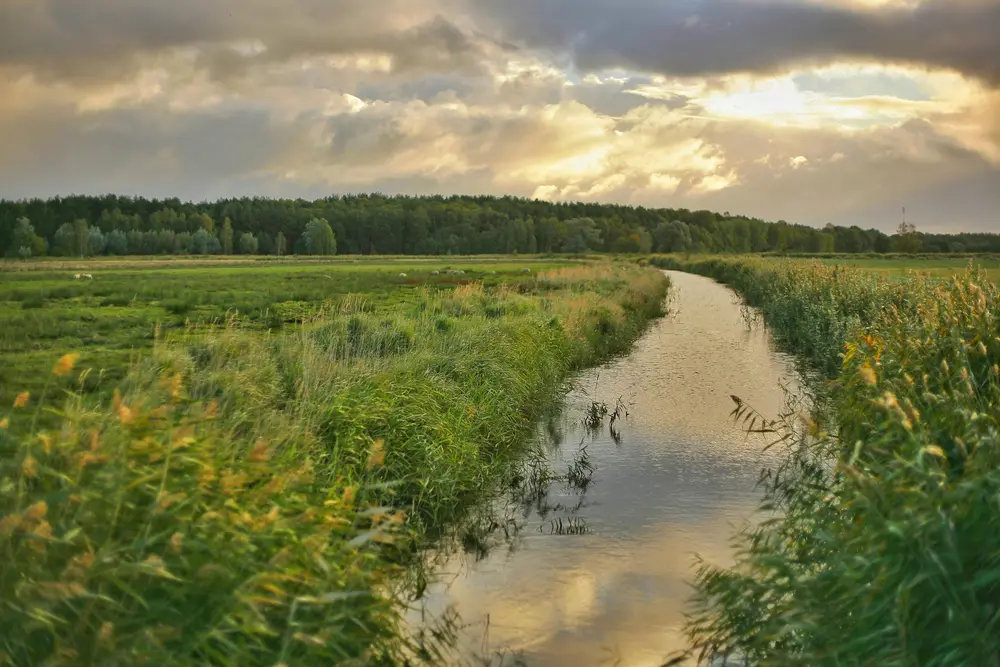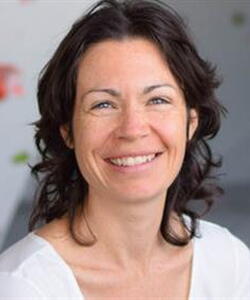
While rivers are popular magnets for fishing, boating, and kayaking, they are also potential powerhouses in the fight against climate change. Rivers and streams carry inorganic carbon from land to oceans in a process called lateral carbon flux. In recent years, environmental engineers have proposed to utilize this movement in a class of carbon sequestration strategies known as “enhanced weathering,” in which atmospheric carbon is redistributed to the ocean through agricultural soil.

Although interest in accelerating the routing of carbon from the atmosphere into landscapes and waterways has fueled a surge of investment in enhanced weathering, researchers from the Department of Earth Science and Environmental Change and The Grainger College of Engineering at the University of Illinois Urbana-Champaign wondered if extreme weather conditions fueled by climate change could also, paradoxically, be a bottleneck to these mitigation efforts.
“We often associate climate change with the earth getting warmer,” said Jinyu Wang, a graduate student in the lab of Jennifer Druhan, professor of earth science and environmental change and civil and environmental engineering. “But it also brings more frequent and intense severe weather conditions like floods, storm events, and drought. It’s more than just, ‘the ice is melting.’”
Wang and her colleagues sought to examine the effects of drought on lateral carbon flux. In their study, published in Nature Geoscience, high-frequency river chemistry data revealed unexpected changes in the chemical composition and carbon-carrying capacities of major river networks. These changes must be accounted for in the next generation of enhanced weathering.
“Our study is part of a growing recognition that what we have often thought of as the product of climate change — like a drought or flood — is also feedback,” Druhan said. “It’s not simply that droughts are more frequent because of a changing climate; that dryness also affects carbon exchange between the landscape and atmosphere.”

The researchers used a unique, compact aqueous chemistry laboratory called RiverLab — deployed in Monticello, Ill. — to record ion concentrations in the Sangamon River every 30 minutes during a continuous 195-day period of moderate drought. Their analysis revealed unexpectedly steady concentrations of calcium and magnesium while all other ions became more concentrated, due to the formation of secondary carbonate minerals that remain in the soil and release carbon dioxide back into the atmosphere. The group’s findings also shed light on the carbon-carrying limits of riverways — an innate capacity that can’t be exceeded.
After analyzing their data, the Illinois Grainger engineers compared their results to records from a 2012 drought and found consistent chemical signatures.
“Once we knew what to look for, we were able to see the same behavior in historic droughts,” Druhan said. “I think there’s a really interesting opportunity here to hindcast, or look backwards into how these landscapes have been functioning during periods of low flow to help us better understand what might happen in the future.”
As the researchers enter their final year of the RiverLab project, they hope to secure additional funding to continue operating and pursuing improved carbon sequestration strategies.
“A big question that I have right now is: if droughts are periods of accumulation of all these secondary minerals, then storms must be periods of release,” Druhan said. “How much are storms able to be hot moments of carbon transport across landscapes? If we are trying to engineer these watersheds to move more carbon, then storm events might be the ticket. But that’s going to take a lot more work.”
While RiverLab is the only one of its kind in the United States, the Illinois researchers hope similar projects catch on throughout the country.
“We need more high-frequency records for river quality data,” Wang said. “There are also metrics of potential value that we haven’t addressed yet, like isotopes and microplastics. Having more RiverLabs everywhere would allow us to see how other river waters behave, giving us more insights into our next steps in dealing with climate change.”
This research is a collaboration with the Prairie Research Institute at Illinois; Praveen Kumar also contributed.
The study, ‘Droughts constrict lateral carbon transport,’ is available online. DOI: https://doi.org/10.1038/s41561-025-01807-z
Illinois Grainger Engineering Affiliations
Jennifer Druhan is an Illinois Grainger Engineering associate professor of civil and environmental engineering in the Department of Civil and Environmental Engineering. She is also an associate professor of earth science and environmental change in the Department of Earth Science and Environmental Change.
Praveen Kumar is an Illinois Grainger Engineering professor of civil and environmental engineering in the Department of Civil and Environmental Engineering and the executive director of the Prairie Research Institute. Kumar holds the Colonel Harry F. and Frankie M. Lovell Endowed Professor of Civil and Environmental Engineering appointment.